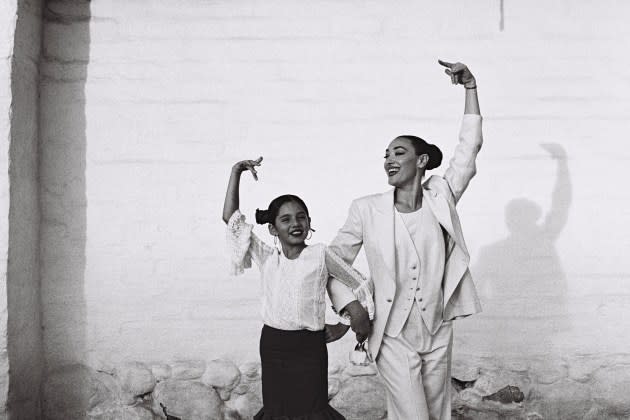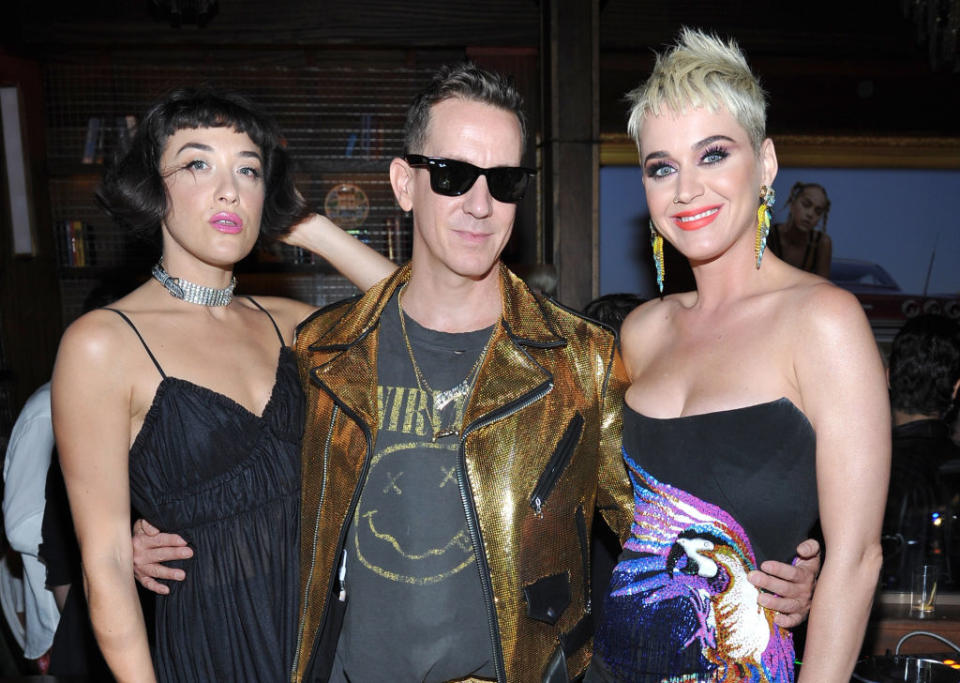Mia Moretti on Falling In Love With Bullerengue Music for New EP: ‘I Was Pulled In’
- Oops!Something went wrong.Please try again later.
- Oops!Something went wrong.Please try again later.

It’s been more than two decades since Mia Moretti burst onto the scene as a creative ingenue-turned-in-demand DJ, instantly capturing both the music and fashion world’s attention. But after years of playing for other people — at everything from Met Gala after-parties to this summer’s Barbie movie premiere — the 39-year-old Moretti is finally taking time to create something for herself.
The desire to find her own voice and that subsequent years-long journey of self-discovery culminates in TAMBOR, Moretti’s eclectic new EP that incorporates the DJ and producer’s love for world music with her passion for storytelling and performance.
More from Rolling Stone
Ed Maverick's Cover of Peso Pluma and Jasiel Nuñez's 'Lagunas' Will Make You Llorar in Spanish
Israeli Evidence of Hamas Command Center in al-Shifa Hospital Falls Short: Report
5SOS Say Goodbye for Now With 'The 5 Seconds of Summer Show' Documentary Concert Film

Nowhere is that more evident than in Moretti’s latest single, “Rosa.” A tribute to Afro-Colombian artists Magin Diaz and Totó La Momposina, and inspired by the DJ’s deeply-felt connection with their culture, “Rosa” reimagines the classic Colombian ballad into a deeply soulful, drum-fueled dance anthem that’s a celebration of life, love and community.
Seeking to pay tribute to the original song, the new track features Momposina’s granddaughters on background vocals, with the singer’s long-time collaborator and band member Jorge Aguilar singing lead. The music video, meantime, was shot by Emmanuelle Pickett, who’s earned acclaim for her most recent film, the crime thriller All Souls (starring G-Eazy).
Rolling Stone talked to Moretti about the inspiration behind her new record, the connection she found with Bullerengue music and why she’ll never seek advice from her famous friends.
You’ve been in the industry for over a decade — why was now the right time to introduce new music?
I stopped DJing almost entirely during the pandemic. During that time, instead, I started writing. I wrote a four-volume collection of poetry, Low Touch Economy. It was a big shift for me as I was used to playing 3-5 nights a week for the last ten years. When I went back to my first gig after this ‘hiatus,’ I didn’t feel connected to the music I was playing. I wanted to connect to my craft again and I knew the only way I was going to be able to do that was through my own voice. I went back to my record collection and revisited the records I first fell in love with when I started DJing, from classic Chicago House to South African disco, I started piecing together what stories I wanted to tell. Then I started making that music.
You have a new EP that just came out: what can you tell us about the recording process?
I’m so proud of this EP, TAMBOR, not just because of the music, but because of the process. I did not set out to make this EP. My first two singles sampled house and disco music (Crystal Waters and Letta Mbulu) and I was planning to continue in that direction, but I heard a voice that was so powerful, magnificent and demanding that I stopped what I was doing and just followed that voice.
Do you mean a literal voice or like an idea in your head?
The voice I’m talking about is the great [Colombian singer] Totó La Momposina. I think of my DJ sets as a call and response between two records, the one playing always suggesting how the next will reply, like a conversation, or a flirt. I took this same formula and applied it to production. When I heard Totó singing, I wanted to know who she was singing to, what message was she passing on and how I could follow her call.
This is when a deep dive into Bullerengue music began. I was in Colombia working on another project, and on my days off I scoured record shops. That’s where I fell in love with Petrona Martínez, another Bullerengue queen. I fell for Martínez almost immediately simply off the image on her album covers. That’s the beautiful thing about collecting records, something just pulls you towards them. That’s the same thing that happened when I heard Bullerengue; I was pulled in. Bullerengue is so pure. This music is passed down matrilineally as a way of sharing information to the next generation. In a very abstract way, I relate to this, as I am a female producer passing music to my community, that will eventually be passed to the next.
Your new single, “Rosa,” samples a generations-old track, yet it feels so joyous and fresh. How did it all come together?
As far as the recording, “Rosa” is a melting pot of all of the artists I fell in love with making this EP. There are five different singers stacked on the chorus, each with their own unique story. Jorge Luis Aguilar – who sings the lead – was one of Totó La Momposina’s long-time band members. He sent me his part from Sincelejo, Colombia. Two of Totó La Momposina’s granddaughters, one living in Bogota and one in London, also sang on the chorus. Finally a musician I was working with in Medellin, Colombia, named Mauricio Byfield, added another lead line for additional texture. Because all these recordings were being sent to me from different people at different times, the song reminds me of a collection of love letters, amassed by me to be immortalized in song.
The accompanying music video for “Rosa” is also incredibly artistic. What was the inspiration there?
When I produced Rosa I knew it was a beloved Colombian standard, but what I didn’t know, was that it was first recorded in Cuba around the turn of the century by Sexteto Habanero. I drew a lot of inspiration from the one image of Sexteto Habanero that I could find for the look and feel of this video. Because these original recordings are so old, there are very few images of them, but what is beautiful about not having a lot of visual information is that one gets to use their imagination. I imagined what their days were like, what their homes were like. I imagined their families, their lovers and their children, dreaming perhaps of someone they loved, or remembering a life they had and lost. The song is a love song, but it is sad, someone is longing for a lover. That is the story of the video. The director, Emmanuelle Pickett, shot the video on Super 8 in central California valley and Santa Barbara County. I grew up in Northern California, so these landscapes are so common to me — they are home.
Aside from releasing your new EP, you also got to DJ the Barbie premiere this year. Did that film or cast inspire you in any way?
DJing the Barbie premiere was a thrill. To watch a female director completely crush it in an industry where that is an anomaly is really important. I think this is a great example of how, if you open the barrier of entry — in any industry — excellence follows all around. Dance music is next.

You’re friends with everyone from Barbie contributor Dua Lipa to Katy Perry — did you send them your EP to listen to before you released it?
It’s probably the wrong answer, but I don’t really share my music with anyone. I think the less people and less opinions involved in something, the more genuine and stronger it is. I didn’t set out to produce so I could make the most successful records — I’m making music to connect to myself and my community. I’m the only person that can do that.
Any chance you’d work with either of them in the future?
There is something that Katy and I both worked on that is coming out soon. It’s something we worked on independent of each other, but we landed in the same place. I think if you are close with someone, this is a very normal phenomenon — a sign that you’re in the right company.
How do you think your perspective on your artistry and on the industry has changed over the years?
There is more music than ever before being released right now, but that shouldn’t stop anyone from trying their own hand at music production. It’s no different than any other art form. If you create something authentic and honest, it will find its home.
Best of Rolling Stone

